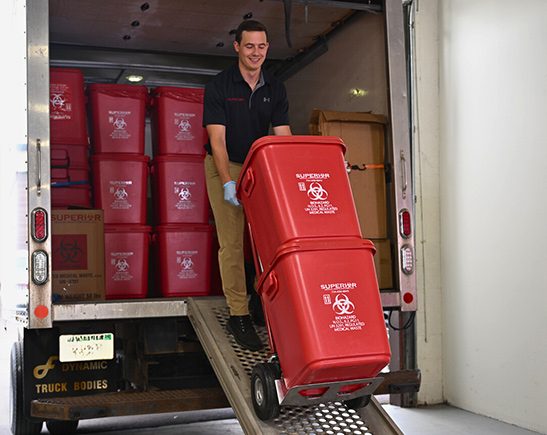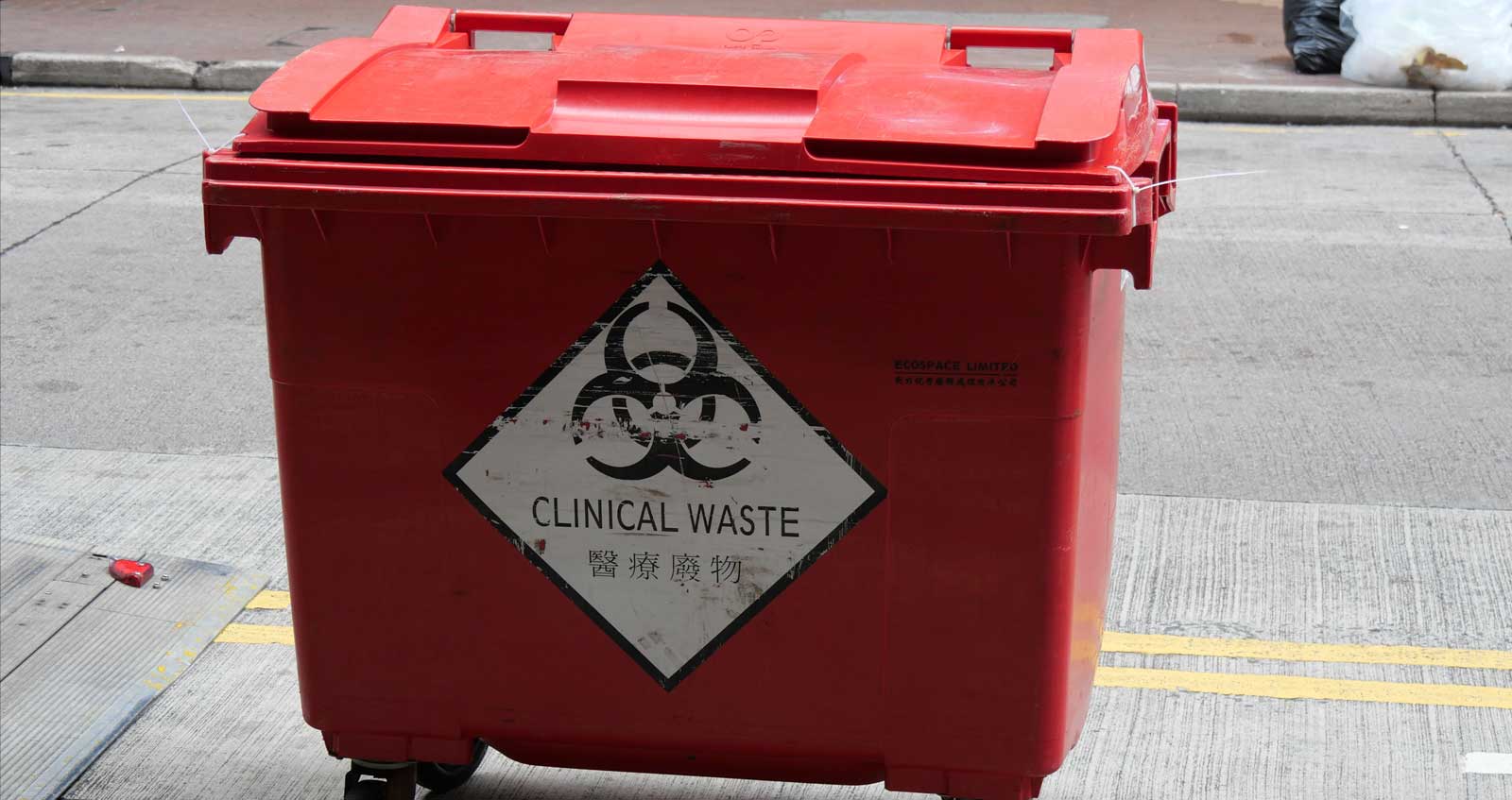Neighborhood Care: Seamless and Reliable Medical Waste Removal Near Me
Neighborhood Care: Seamless and Reliable Medical Waste Removal Near Me
Blog Article
Stay Ahead of Rules: Expert Advice on Medical Garbage Disposal
In a world where the healthcare market is regularly evolving, it is vital for medical facilities to stay ahead of policies when it involves the appropriate disposal of medical waste. With rigid guidelines and constant governing adjustments, it can be testing to navigate the complexities of this process. With professional suggestions, facilities can make sure compliance and minimize dangers connected with incorrect waste disposal. From comprehending the various categories of clinical waste to applying the ideal collection and segregation approaches, this discussion will certainly supply actionable suggestions and important understandings to help centers remain in advance of regulations in the ever-changing landscape of medical waste disposal.
Comprehending Medical Waste Categories
Recognizing clinical waste groups is necessary for appropriate disposal and management in healthcare centers. Medical waste describes any kind of waste generated by health care activities that may posture a danger to public wellness or the setting. It is important to categorize clinical waste accurately to ensure its risk-free handling, transportation, disposal, and treatment.
There are several groups of medical waste that health care centers require to be knowledgeable about. One of the most usual groups consist of contagious waste, pathological waste, sharps waste, pharmaceutical waste, and chemical waste. Each classification has specific standards and regulations for its correct administration and disposal.
Pathological waste refers to human cells, organs, or body parts that need unique handling and disposal. Pharmaceutical waste consists of expired, extra, or infected medications that require mindful handling and disposal.
Staying Up-To-Date With Regulatory Adjustments
Remaining current with governing adjustments is essential for medical care facilities to make sure compliance and appropriate management of medical waste disposal. medical waste removal. With regulations regularly progressing, it is essential for medical care facilities to stay up-to-date to prevent penalties, penalties, and prospective damage to the environment and public wellness
To stay ahead of regulative changes, healthcare facilities should establish a system for surveillance and monitoring updates. This can be done by signing up for governing newsletters, attending meetings and workshops, and proactively participating in sector organizations. Additionally, facilities ought to assign a personnel or team in charge of staying educated and sharing info to relevant stakeholders.
Normal communication with governing firms is additionally essential. Health care centers should develop connections with local, state, and government companies to ensure they are mindful of any kind of adjustments in policies that might affect their waste monitoring methods. This can be done via normal meetings, participation in public comment periods, and positive interaction with regulative firms.
Moreover, health care facilities ought to take into consideration partnering with waste monitoring firms that concentrate on medical garbage disposal (medical waste disposal services with WasteX). These companies are typically fluent in the most recent regulations and can offer guidance and assistance to ensure compliance
Carrying Out Correct Collection and Partition Methods
To successfully handle clinical waste disposal, health care centers have to develop appropriate collection and segregation methods based on regulative guidelines. Applying these approaches guarantees the safe handling and disposal of potentially dangerous products, secures the setting, and reduces the threat of injuries and infections to healthcare workers and the public.
Proper collection and segregation methods include the usage of assigned containers and labeling systems. Healthcare facilities must news supply plainly identified containers for various kinds of medical waste, such as sharps, infectious waste, pharmaceutical waste, and non-hazardous waste. These containers must be color-coded and clearly marked to prevent complication and promote very easy identification.
Furthermore, medical care centers should educate their staff on the right procedures for gathering and segregating clinical waste. This consists of informing them on the various kinds of waste, the proper containers to make use of, and the value of complying with policies and standards. Normal training sessions and refresher programs should be carried out to guarantee that team member continue to be up-to-date on best methods.
In addition, healthcare centers need to establish a system for routine collection and disposal of medical waste. This might include partnering with accredited waste administration companies that concentrate on clinical waste disposal. These business will guarantee that the accumulated waste is moved and taken care of in compliance with regulatory demands.
Selecting the Right Disposal Approaches

Incineration is among the most efficient and common techniques for throwing away particular types of clinical waste, such as pathological waste and sharps. It includes the controlled combustion of waste at high temperature levels, minimizing it to ash. Incineration can launch harmful toxins into the air and contribute to air contamination.

Chemical treatment involves the usage of chemicals to decontaminate and neutralize the waste. Microwave therapy utilizes microwave power to warm and sanitize the waste.
Making Certain Conformity Via Documents and Training
After meticulously considering the appropriate disposal approaches for clinical waste, medical care centers have to make certain conformity with policies and reduce environmental impact by applying reliable paperwork and training treatments. This step is essential in maintaining a sustainable and safe atmosphere for both health care workers and the public.

Medical care workers that manage medical waste needs to get proper training on waste segregation, dealing with, and disposal treatments. By offering comprehensive training, medical care facilities can encourage their personnel to make informed decisions and reduce the threat of incorrect waste disposal.
Final Thought
In final thought, staying in advance of regulations in clinical waste disposal is crucial for medical care facilities. medical waste removal service. Understanding the various categories of medical waste, staying upgraded with governing modifications, implementing correct collection and segregation techniques, selecting the ideal disposal techniques, and ensuring compliance via documentation and training are all essential steps. By adhering to these guidelines, medical care companies can properly take care of and dispose of clinical waste in a secure and liable fashion
From understanding the different groups of clinical waste to implementing the ideal collection and segregation techniques, this discussion will certainly give valuable insights and workable tips to assist facilities remain in advance of regulations in the ever-changing landscape of medical waste disposal. - medical waste disposal services with WasteX
The most common classifications include contagious waste, pathological waste, sharps waste, pharmaceutical waste, and chemical waste. Medical care centers ought to offer plainly labeled containers for different types of medical waste, such as sharps, infectious waste, pharmaceutical waste, and non-hazardous waste. Medical care facilities should establish a comprehensive system to tape and track all facets of medical waste disposal, including kinds of waste created, amounts, and disposal methods utilized. Medical care employees who manage clinical waste should receive proper training on waste partition, dealing with, and disposal treatments.
Report this page